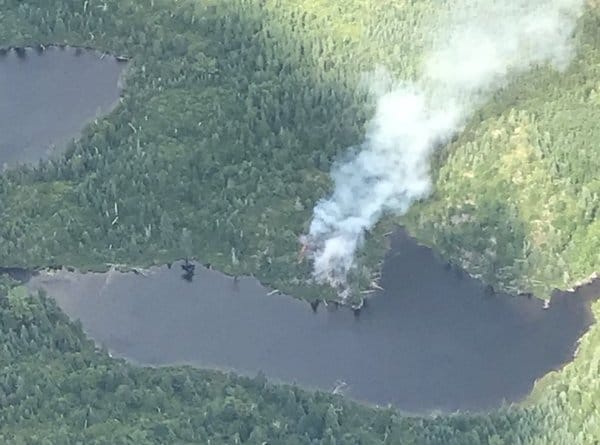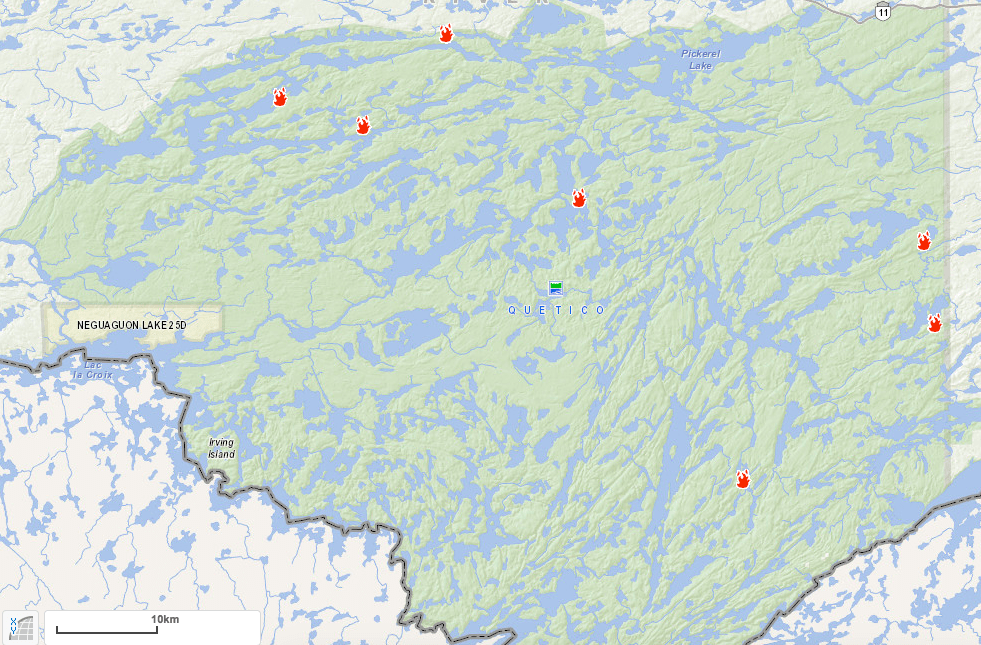
As summer winds down, the woods dry up. A number of small wildfires have recently ignited in both the Boundary Waters Canoe Area Wilderness and Quetico Provincial Park.
Ogish extinguished
Last week, a two-acre fire was spotted in the Boundary Waters, south of Sea Gull Lake. Fire crews paddled to the site and monitored it, but the flames soon fizzled out due to rain.
The Ogish Fire was ignited by lightning on July 30, located on the shores of Ogishkemuncie Lake, near the portage between Ogishkemuncie and Mueller lakes.
Rain and cool temperatures arrived shortly after it was ignited and helped contain the blaze.
Ten firefighters were on the site until Friday, August 3, when the fire was declared controlled.
Quetico

On the Canadian side of the border, Quetico Provincial Park reports six wildfires burning in the wilderness area, all of them less than 2 acres in size.
All six fires were believed to be ignited by lightning, during the same couple days the Ogish Fire started. The Canadian government is for the most part watching the fires, and not actively suppressing them.
Park officials posted an advisory on Facebook today about what to do while traveling to Quetico.
“Please consult with a park ranger when you pick up your park permit for up to date fire information, or call the park information line at 807-597-2735, as a re-route to your trip plan may be required. These fires can be unpredictable and can drastically change in size and direction of travel based on weather conditions.”
Wildland firefighter Drew Bursey shared on social media how he had traveled to a fire in Quetico, and received a handmade thank you card from campers.
Fire and the forest
Fire is essential to the health of the canoe country ecosystem. Flames historically helped trees regenerate, and cleared thick brush.
In 1973, Forest Service ecologist Miron Heinselman published research into the fire history of the region and its connection to how the forest functions, calling for fire to be allowed to play its natural roles.
“To restore the natural ecosystem of the Canoe Area, fire should soon be reintroduced through a program of prescribed fires and monitored lightning fires,” Heinselman wrote in Fire in the virgin forests of the Boundary Waters Canoe Area, Minnesota. “Failing this, major unnatural, perhaps unpredictable, changes in the ecosystem will occur.”
The Superior National Forest plan adopted in 2004 calls for fire to be managed as a natural force, while protecting people and property.
“The presence of wildland fire on the landscape is appropriate and desirable, but unwanted wildland fire is actively
suppressed where necessary to protect life, investments, and natural resources,” the agency identified as an objective. “The full range of appropriate management responses are considered for unwanted wildland fires.”

